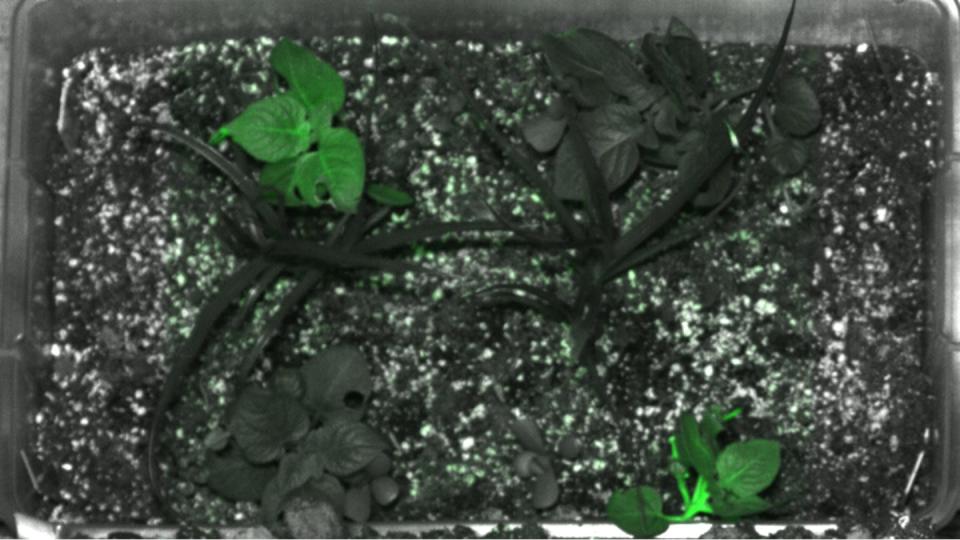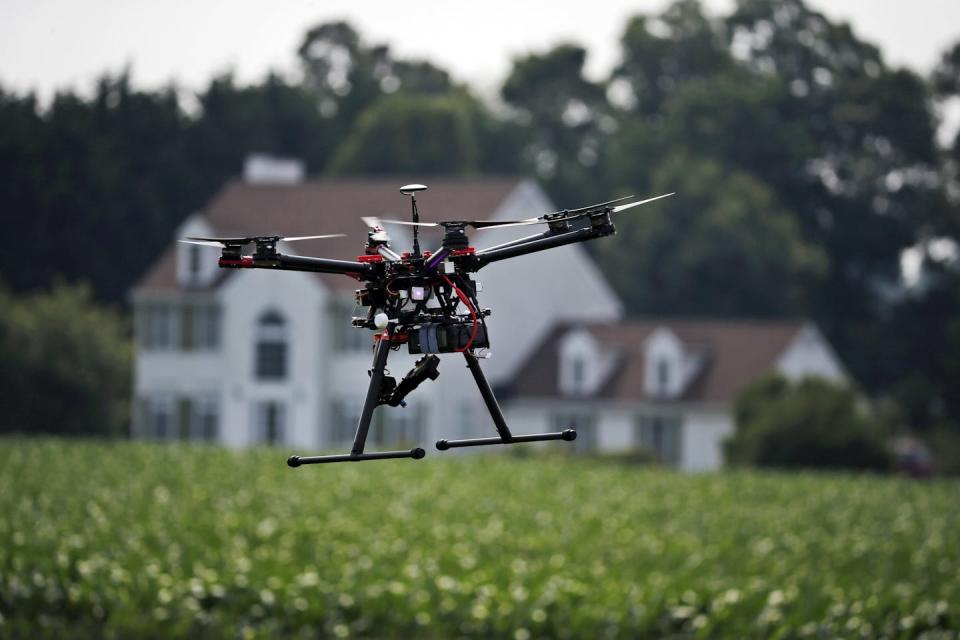While increased nuclear energy production would provide carbon-free power and could help countries around the world meet their climate goals, nuclear energy may also have some inherent risks. Radioactive pollution damages the environment, and is almost impossible to detect without specialized equipment. But what if plants growing in the surrounding area of the facility could detect radiation pollution?
The mechanical radiation detectors currently used, known as dosimeters, are not entirely reliable – during previous nuclear accidents such as Chernobyl, they failed or were destroyed by rubble.
Our team of plant scientists at the University of Tennessee wanted to come up with alternatives to these mechanical radiation sensors to help combat their historical failures, so we decided to build a plant-based sensor for gamma radiation. The sensor, called a phytosensor, is a potato plant that glows green fluorescent when exposed to radiation.
Historical sensor problems
The World Nuclear Association estimates current nuclear energy production. But safety failures still happen, whether from human error or natural disasters such as earthquakes taking the mechanical sensors offline – and that’s where our plant sensors can come in.

Mechanical radiation detection equipment requires electrical power and regular maintenance, both of which are less reliable during emergencies. A plant-based sensor would not be needed either.
The types of disasters that take mechanical sensors offline could damage the potato sensors but probably wouldn’t kill an entire field of planted potatoes. As long as some plant cells are still alive, the plant could act as a radiation sensor.
Although potato plants are tough, certain disasters, such as a wildfire, would damage plant sensors more than mechanical sensors. Although our sensors could supplement mechanical sensors, they would not completely replace their use.


Plants as sensors
Unlike mammals, plants can tolerate a lot of radiation before they die. Potato plants, for example, can survive 10 times the amount of radiation that would kill a person.
We chose potatoes as our sensor organism because potato plants can tolerate high levels of radiation, are easy to grow using tubers and can survive in a variety of environments around the globe.
Radiation exposure damages DNA inside the cells of organisms. When this happens in plants, they go into “red alert” mode and activate many DNA repair genes to fix the problem.
My colleagues and I co-opted the DNA damage response pathway in potato plants so that the potato leaves produced a green fluorescent protein when exposed to radiation. This fluorescent protein causes the plants to emit a unique fluorescent green glow when exposed to gamma radiation.
Although the human eye cannot see the green signature, drones used for agricultural and environmental monitoring can. The more green fluorescence the plant produces, the higher the radiation intensity. So the sensors can tell you “yes, there is radiation,” as well as approximately how much radiation there is.
In our tests, the plants reported radiation eight times after exposure, but that was the earliest our team was able to check them.


Based on our testing, the current radiation biometer can report a total minimum dose of 10 grays of radiation – a very lethal dose for humans. The sensors reported radiation eight times after exposure, and continued to do so for 10 days or more, depending on the dose.
Mechanical sensors can detect much lower levels of radiation in real time, rather than as a cumulative dose as detected by the phytodetectors. This makes mechanical sensors ideal for day-to-day monitoring of dangerous radiation within a power plant, while phytosensors are best for monitoring the larger land areas around a power plant.
The current sensor could monitor radiation levels for the general public in an emergency where radioactive material could be anywhere within a large disaster area. Chernobyl contaminated an area about the size of Nebraska, and Fukushima contaminated an area about the size of New Jersey. Most of this area had low level contamination, with some hot spots.
Compared to mechanical sensors, phytosensors are slower and less sensitive, so they would not save anyone working inside the power plant, even if they were grown inside. The current sensor could tell first responders where the hottest areas are during a large-scale disaster. After a disaster, it could let regulators know where it’s safe for workers, and ultimately the public, to return to.
We tested the sensor using an in-lab laser and camera, which are low-power, low-resolution devices. It is likely that actual drones with specialized detection systems could detect lower radiation thresholds.
As well as functioning similarly to mechanical radiation sensors, the potato-based radiation sensor phytase is a living, growing organism that derives its energy from sunlight. This means that the phytosensor is self-repairing, self-propagating and self-powered, unlike mechanical sensors. Since potatoes grow from tubers, they do not need to be replanted every year.
One disadvantage of the current sensor is that potato plants die in the winter, so you lose the sensor during that season. Our sensor gene could be inserted into an evergreen species such as a pine tree, but this sensor would need to be replicated to understand its minimum detection and performance over time.
Potential applications
When used in combination with more sensitive mechanical sensors, the existing radiation phytosensor could act as a fail-safe in the event of a disaster like Fukushima Daiichi.
Although there are many possibilities for incorporating phytocanopies into our current monitoring systems, our team still faces obstacles before the plants can be deployed in the field.
First, nuclear regulators would have to determine whether this technology is safe and useful, given their expectations of radiation monitoring equipment. Then, the USDA would conduct a rigorous evaluation of the plant sensor to determine if the phytosensors would negatively impact ecosystems if released.
More research will be needed to overcome these barriers, which could take months given the growth time for plants. Despite the work ahead, radiation phytodetectors could help protect people and the environment in the future as countries continue to produce nuclear energy.
This article is republished from The Conversation, a non-profit, independent news organization that brings you reliable facts and analysis to help you make sense of our complex world. Written by: Robert Sears, University of Tennessee and Neal Stewart, University of Tennessee
Read more:
Neal Stewart receives funding from federal organizations. This work was funded by the Defense Advanced Research Projects Agency. Neal Stewart is an inventor in plant biotechnology, although none of the technologies described in the Chat article are patented.
Robert Sears does not work for any company or organization that would benefit from this article, does not consult with, shares in a company or organization that would benefit from this article, and has not disclosed any material relationships beyond his appointment academic.